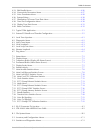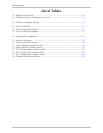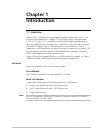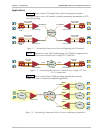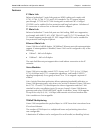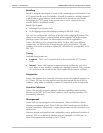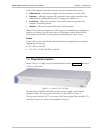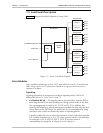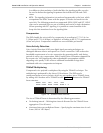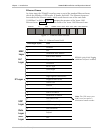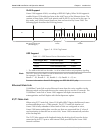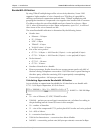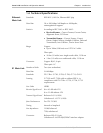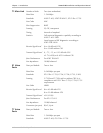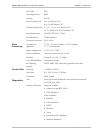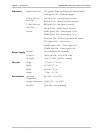
Vmux-2100 Installation and Operation Manual Chapter 1 Introduction
Functional Description 1-7
In addition to the translation of individual bits, the signaling profiles can also
be used to define the signaling bit patterns that indicate the idle and OOS
states.
• CCS – The signaling information is transferred transparently to the host, which
encapsulates the HDLC frame with the proper IP header and sends it to the
main link. The following protocols are supported: ISDN, QSIG and SS7. HDLC
data can be extracted from any set of timeslots and sent to a single destination.
When operating with SS7 signaling, it is possible to control amount of the
keep-alive bits transferred over the signaling links.
Compression
The DSPs handle the voice traffic by compressing it according to G.723.1 (6.4 or
5.3 kbps) and G.729 A (8 kbps), or digitizes it according to the G.711 requirements
(A-law and µ-law). Compression methods are user-selectable per bundle.
Voice Activity Detection
Voice Activity Detection (VAD) uses digital signal processing techniques to
distinguish between silence and speech on a voice connection. VAD reduces the
bandwidth requirements of a voice connection by generating traffic only during
periods of active voice conversation. With Comfort Noise Generation supported at
the remote site, VAD significantly reduces bandwidth consumption without
degrading voice quality. VAD achieves additional bandwidth savings when
combined with voice compression techniques.
TDMoIP Multiplexing
Compressed voice payload is multiplexed by using the TDMoIP technique. The
multiplexing is performed by the Vmux-2100 software. The DSPs send a
continuous stream of voice packets; which are put together into a TDMoIP frame
by adding AAL2 headers and a TDMoIP header. Figure 1-6 illustrates the TDMoIP
frame structure.
AAL2
Header
AAL2
Header
Voice
Packet
Voice
Packet
TDMoIP
Header
Figure 1-6. TDMoIP Frame Structure
The size of TDMoIP frame is determined by the following parameters:
• Packetizing interval – Defining time interval allocated for the TDMoIP frame
aggregation (10 to 90 msec).
• Maximum bytes per multiplexed frame – Specifying the maximum size of each
frame (100 to 1461 bytes).



